Retrospective: Anne Dangar
Press release and photos by the National Gallery of Australia
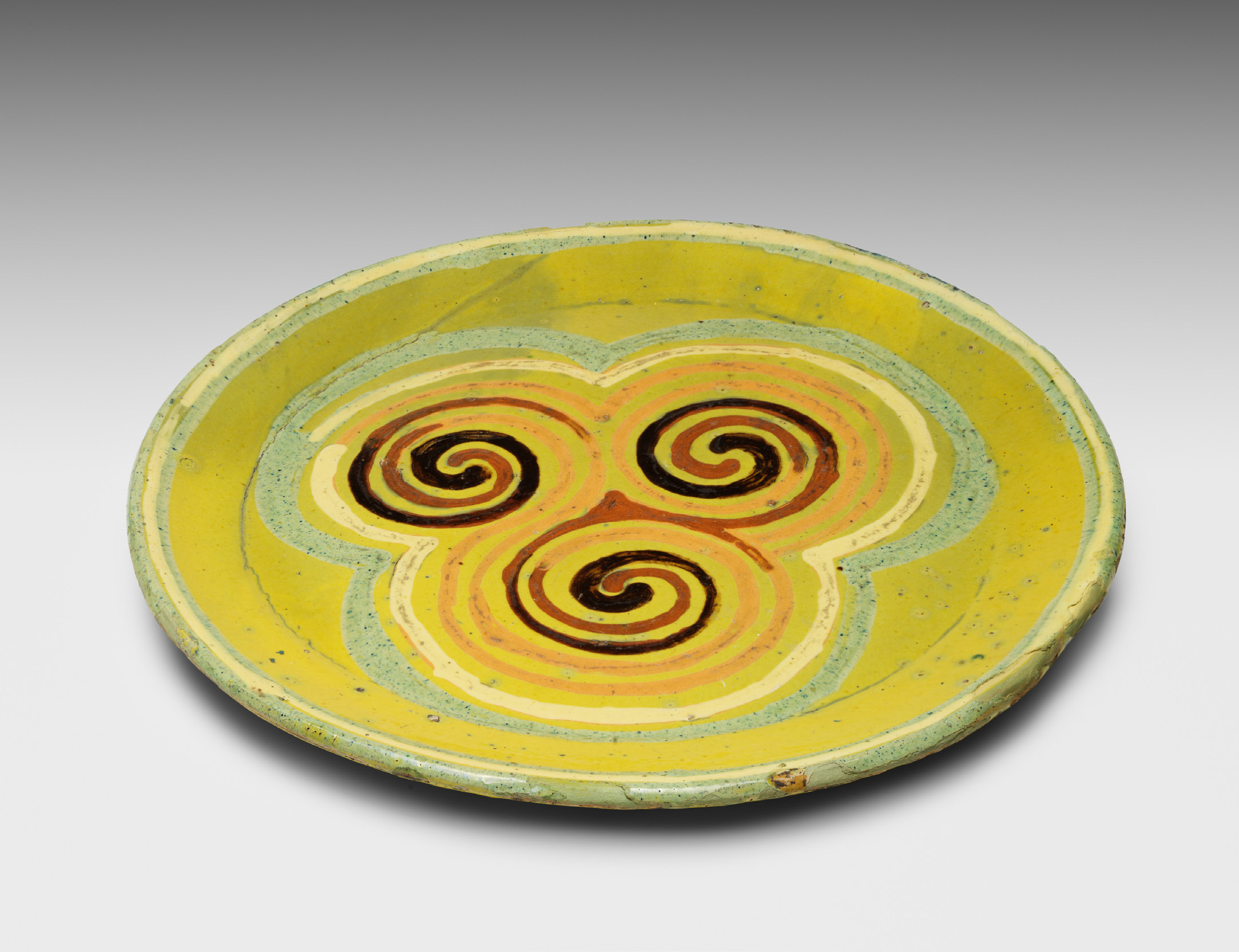
Anne Dangar, Plate, (1933-38), National Gallery of Australia, Kamberri/Canberra gift of Grace Buckley in memory of Grace Crowley, 1982. Image courtesy of the National Gallery of Australia.
Anne Dangar
trough 27 APRIL 2025
at the National Gallery of Australia in Canberra, Australia
Almost a century ago in 1930, she moved permanently to the artist community Moly-Sabata in France, established by the cubist painter Albert Gleizes. Over the next two decades, she dedicated herself to Cubism, developing a distinct practice that synthesised traditional French pottery with cubist designs and decorations.
Dangar is one of very few Australian artists to form part of the European avant-garde in the twentieth century, and the only to meaningfully contribute to Cubism in France, her adopted home. She was also a dedicated advocate and promoter of modern art in Australia, the first to teach and arguably to exhibit cubist art in the country, and she directly influenced the development of abstraction in Sydney from the 1930s onwards.
Bringing together ceramics, paintings, works on paper and archival material, this exhibition will explore Dangar’s life and practice, as well as her important position in French modern art as one of most dedicated and truly modern Australian artists of the twentieth century.
Dr Nick Mitzevich, the museum director writes: ‘For almost a century, Anne Dangar has quietly occupied a position in art history as one of Australia’s most important, yet underacknowledged modern artists. Through privileging Dangar’s voice and excavating her life, process and practice through primary material, this major retrospective of Dangar’s work seeks to definitively claim her position at the centre of Australian odernism, rather than at the periphery.
Anne Dangar draws upon a range of rarely accessed archival material, including an extensive collection of Dangar’s sketchbooks, drawings, ceramic designs, teaching notes and materials, which was acquired by the National Gallery in 2012. While she is among many women artists of the 20th century who have gained recognition in recent years — more than 70 years after her death and almost 100 years since she resolved to devote herself to Cubism — she stands alone as one of most unwaveringly dedicated, quietly impactful and truly modern Australian artists of the twentieth century.’
The exhibition is accompanied by a major publication led by Rebecca Edwards with contributions from Peter Brooke, Angela Goddard, ADS Donaldson, Elena Taylor and Anne O’Hehir. [Read more about the art book.]
Anne Dangar is a Know My Name project, the National Gallery initiative celebrating the work of all women artists to enhance understanding of their contribution to Australia’s cultural life.
The National Gallery gratefully acknowledges the generous support of the Sid and Fiona Myer Family Foundation.
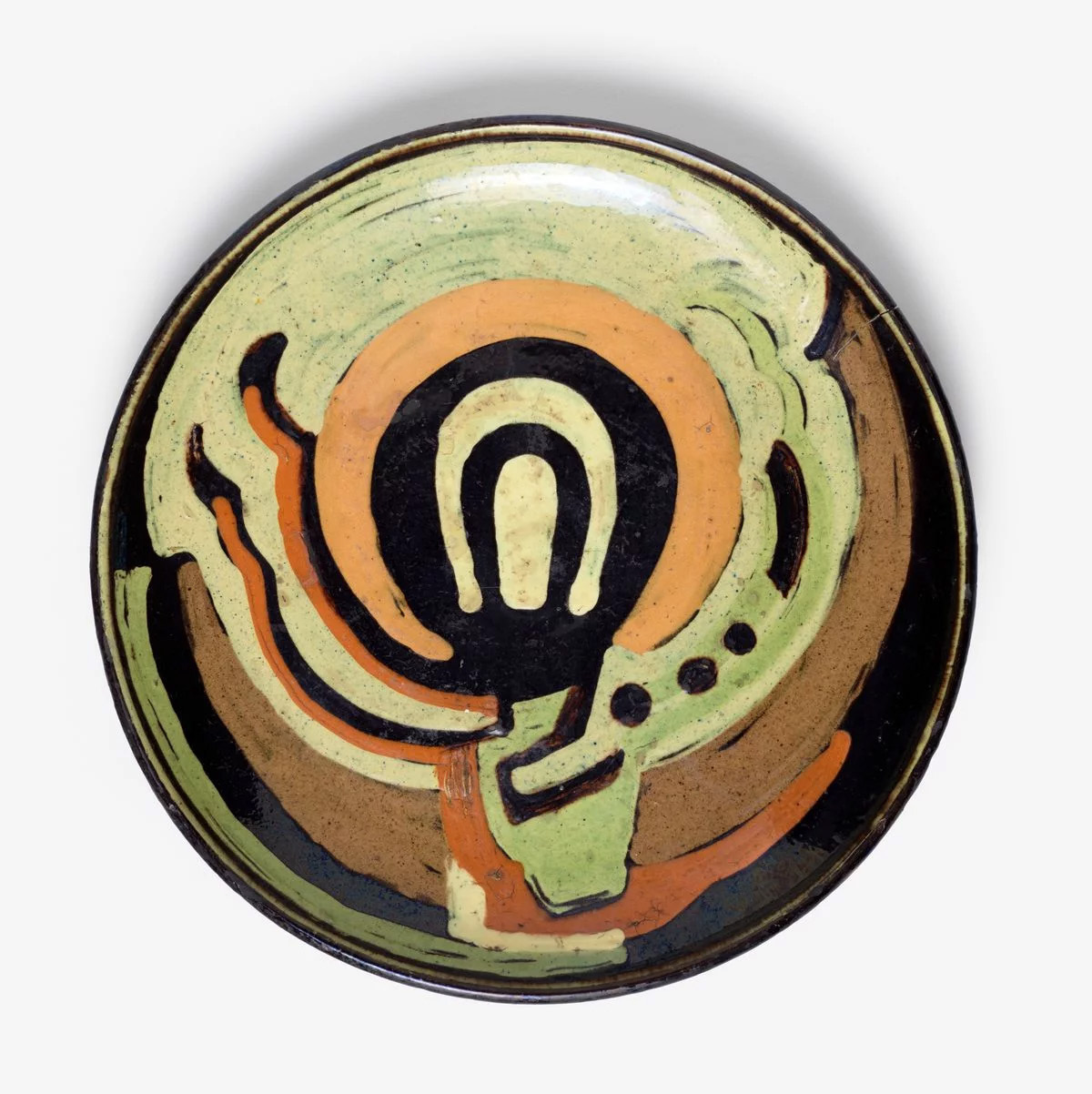
Anne Dangar, Plate, 1934-35, National Gallery of Australia, Kamberri/Canberra, gift of Ruth Ainsworth 1998, courtesy of the National Gallery of Australia.
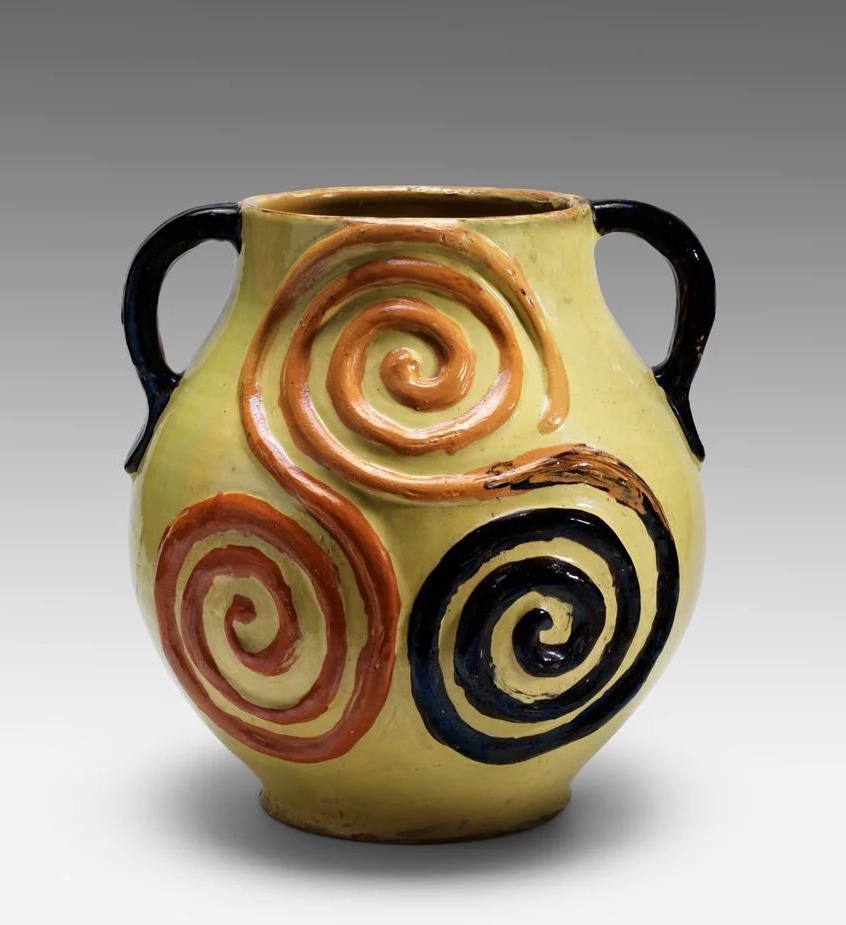
Anne Dangar, Pot with spiral decoration, 1934-1950, National Gallery of Australia, Kamberri/Canberra purchased 2002, courtesy of the National Gallery of Australia.
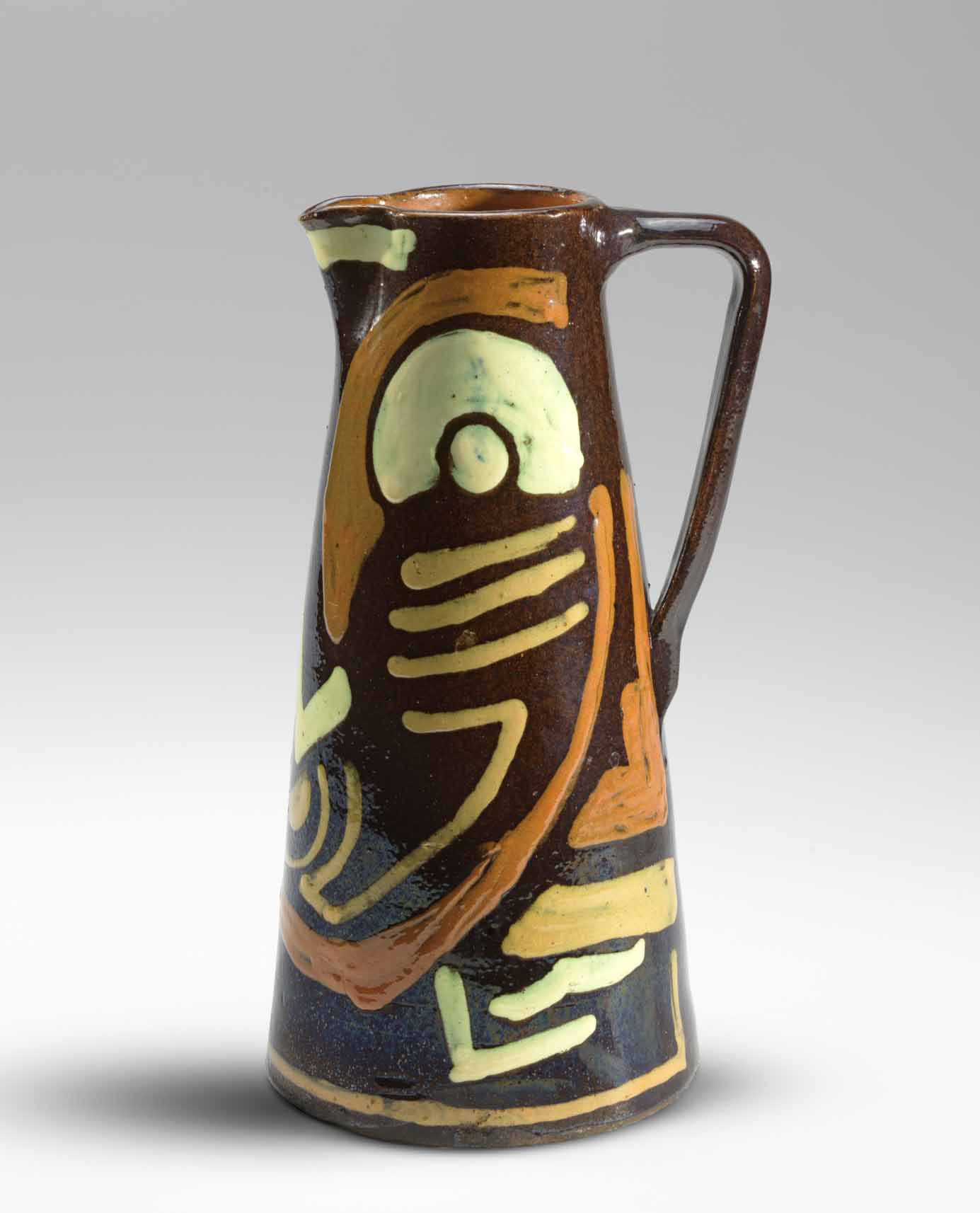
Anne Dangar, Jug (1933–38), National Gallery of Australia, Kamberri/Canberra, bequest of Michael Fizelle 1985, courtesy of the National Gallery of Australia.
Artist biography | Anne Dangar
1885 Kempsey, New South Wales – 1951 Sablons, France.
During the first half of the 20th century, Anne Dangar (1885–1951) was one of the few Australian artists to engage directly with currents of European modernism. She is now recognised as one of Australia’s most important cubist artists. Born in 1885 in Kempsey, New South Wales, Dangar studied under Julian Ashton at the Sydney Art School. In 1926, she and painter Grace Crowley travelled to France where they studied under cubist painter André Lhote.
During this time, Dangar also encountered the paintings of Albert Gleizes and was immediately drawn to his cubist philosophies which drew upon the symmetries and patterns found in nature and ancient cultures, and theorised a rhythmic art based on the translation of planes and rotation of forms.
Lacking financial support, Dangar reluctantly returned to Gadigal Nura/Sydney in 1929. When Crowley reached out to Gleizes on Dangar’s behalf, he and his wife invited her to permanently join their artist community at Moly-Sabata in Sablons, a small town located on the Rhône River in the south of France. Despite never having met or corresponded with Gleizes directly, Dangar accepted the offer immediately and arrived at Moly-Sabata in 1930. Dangar became a dedicated adherent and conduit for Gleizes’s philosophies and a much-loved member of the local community. Although she had originally trained as a painter, Dangar worked principally as a potter, decorating wheel-thrown plates and vessels with her cubist designs. She continued to advance her skills by working with potters based in the nearby towns of Saint-Désirat and Roussillon. Her works were inspired combinations of tradition and modernism, melding rustic methods of the region with avant-garde, abstract designs. She exhibited her works regularly at annual exhibitions at Moly-Sabata and the wider region, as well as at commercial art and design galleries in Lyon. Her works were also included in important surveys and presentations of modern art in Paris, including ‘The Masters of Independent Art, 1895–1937’ held at the Petit Palais, Paris in 1937, ‘Aspects of Cubism’ held at the Salon d’Automne, Paris in 1938, and the major exhibition ‘Du Cubisme aux Arts traditionnels’ held at the École des Beaux-Arts, Paris in 1953.
Dangar never returned to Australia, leaving France only once to work with potters in Fez, Morocco in 1939. She stayed at Moly-Sabata throughout the Second World War, and despite several plans to return home, was ultimately too attached to Gleizes’s ideas and the community to leave. She died in France after a short illness in 1951. While she was relatively unknown in Australia at the time of her death, she is increasingly considered one of the most important figures in Australian abstraction by art historians and curators, and her works are represented in all major state institutions. In France, her works are held in numerous public collections, including the Musée National d’Art Moderne, Paris, Musée des Beaux-Arts, Lyon and the Musée des Beaux-Arts, Valence.
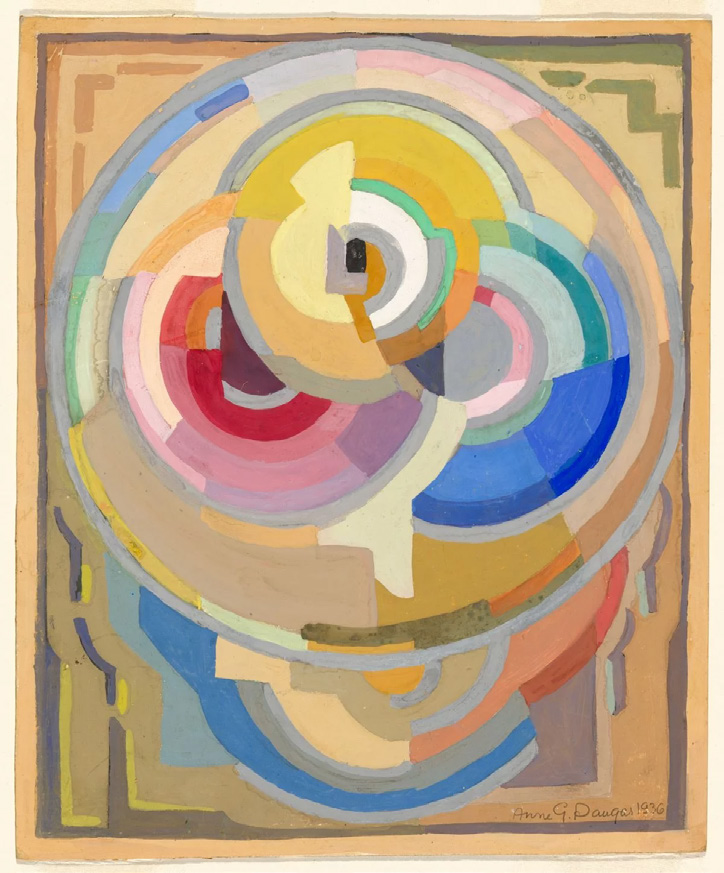
Anne Dangar, Gouache (1936), gouache on paper. National Gallery of Australia, Kamberri/Canberra, purchased 2002. Courtesy of the National Gallery of Australia.
In 1938, Dangar exhibited ceramics and two gouaches in the major cubist survey exhibition Aspect actuel du cubisme chez quelques aînés et quelques jeunes, staged at the Salon d’Automne, the progressive alternative to the Paris Salon. In a photograph of the display, this gouache can be seen hung on the far wall alongside major paintings by Albert Gleizes and Robert Delaunay around the doorway. Although smaller in scale, it matches their formal complexity, the trio of overlapping circular shapes spiralling upwards. Among Dangar’s ceramics was an angular coffee-set and plate featuring a graphic black-and-white abstract design. Her inclusion in this important exhibition firmly announced her participation in the cubist movement in France.